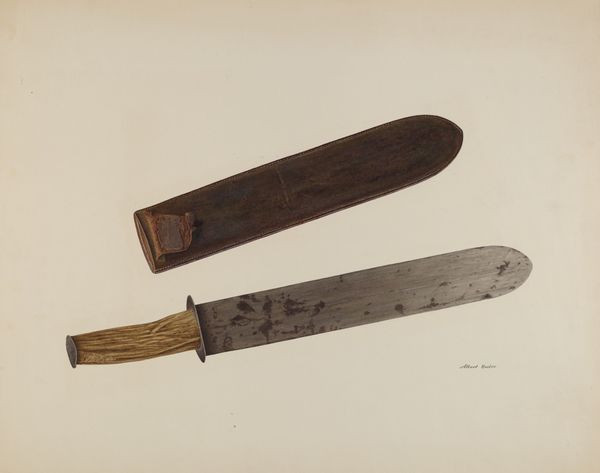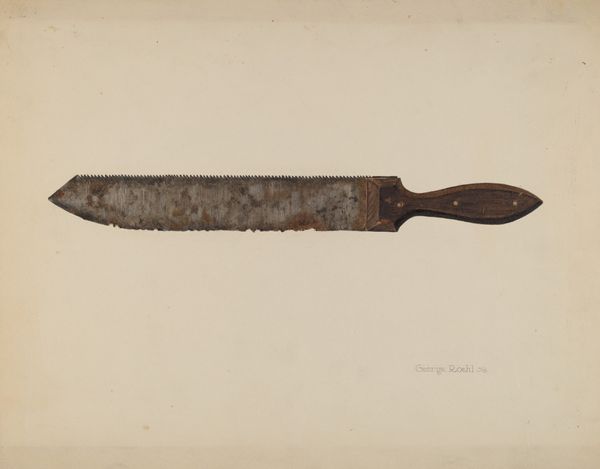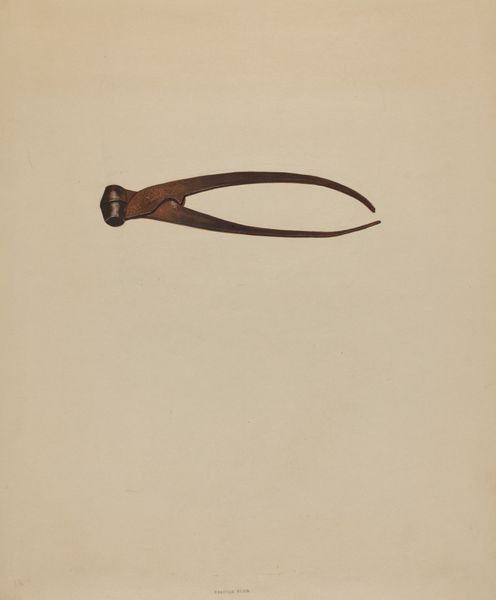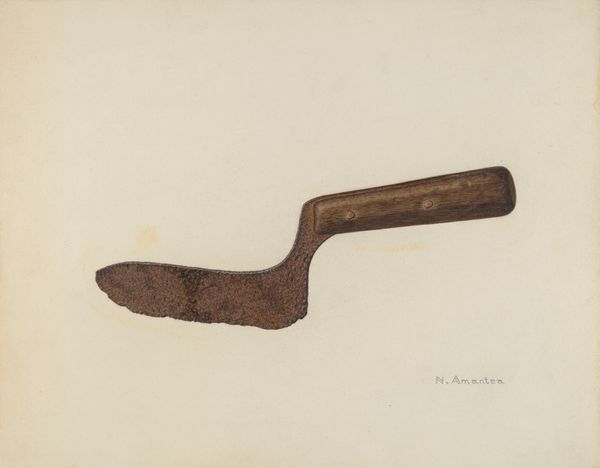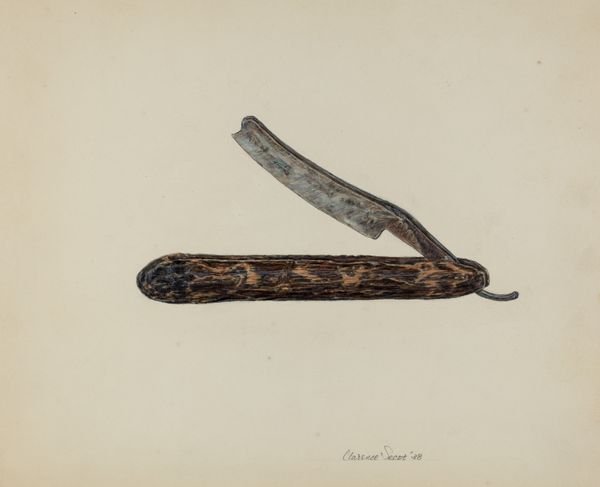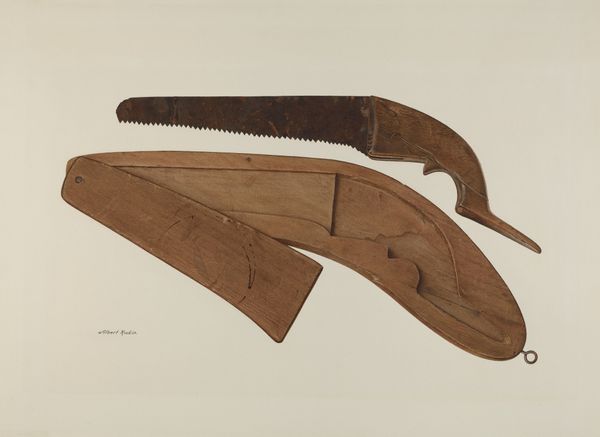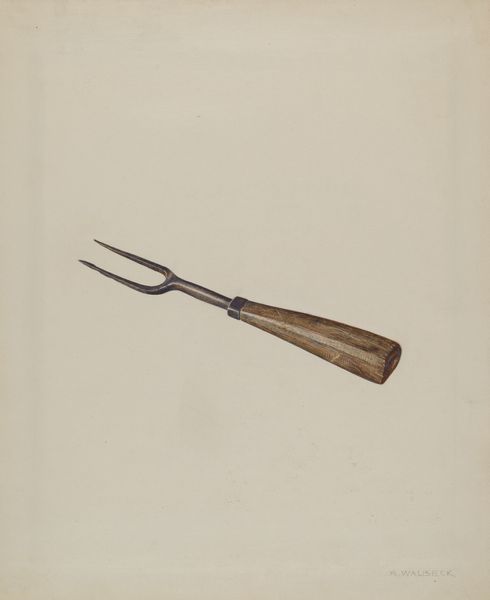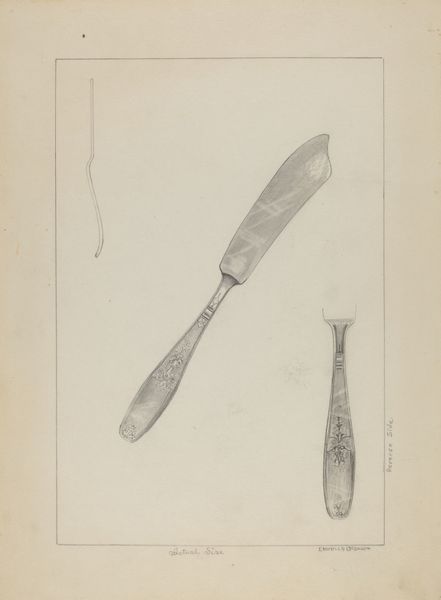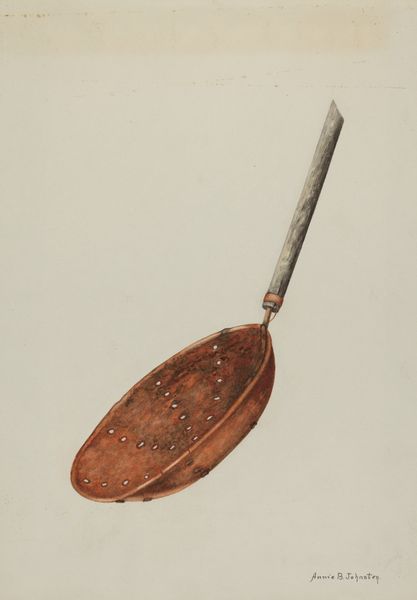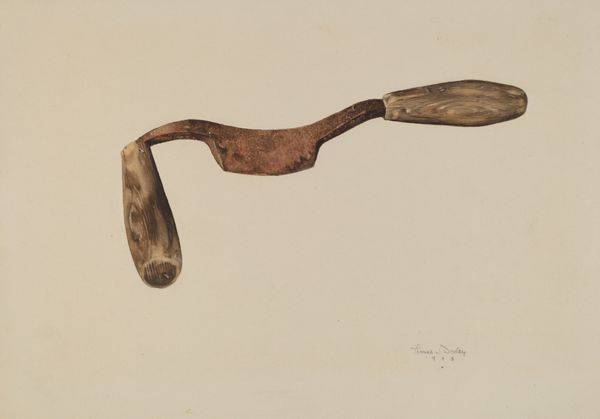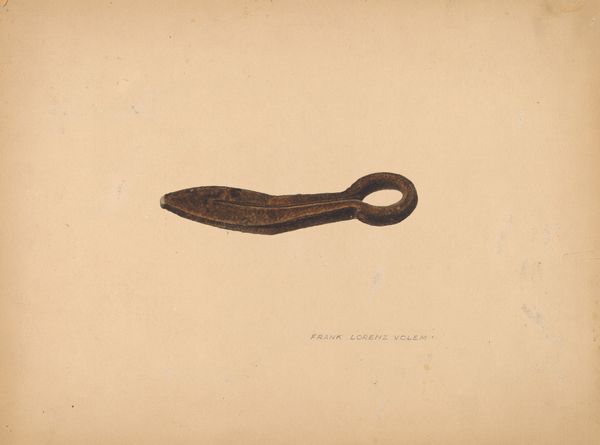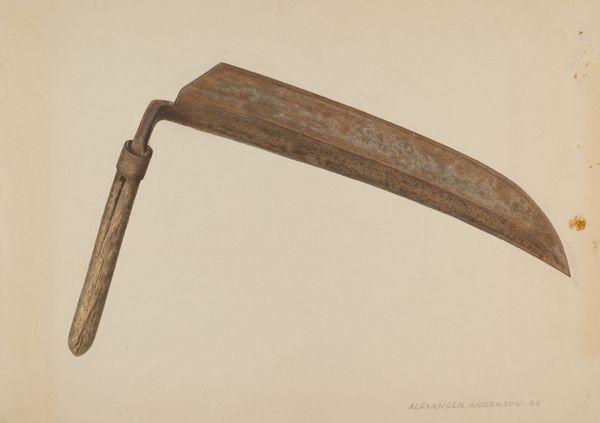
drawing, pencil
#
pencil drawn
#
drawing
#
pencil sketch
#
pencil drawing
#
pencil
#
realism
Dimensions: overall: 31.5 x 39.2 cm (12 3/8 x 15 7/16 in.) Original IAD Object: 26" long
Copyright: National Gallery of Art: CC0 1.0
Curator: Wynna Wright’s pencil drawing, "Barber's Sign," created around 1938, is now before us. It feels strangely intimate, don't you think? Like holding a secret. Editor: Intimate, yes, in a somber, understated way. The composition is sparse. Just a single straight razor on a pale ground. The pencil work is delicate, almost fragile. Curator: The subject itself—the straight razor—carries quite a history. Beyond the utilitarian aspect, it suggests rituals, a very masculine, carefully orchestrated choreography around self-presentation. Editor: Absolutely! We’re looking at the ultimate symbol of transformation. In this context, the ritual of shaving transforms a man, but razors across cultures signify purity and sacrifice, think tonsures or even blood oaths. Curator: I like that, the oath made over a pristine face. It certainly evokes this tension between vulnerability and control. There is almost something surgical in its appearance; the meticulous depiction, the sharpness. Does this not suggest to you the emotional complexity beneath this object? Editor: Absolutely. I note the label J.Wesson & Son' engraved upon the tool, likely denoting its maker and origins; I wonder whether a man may become as associated with their choice of razor as a knight becomes with their sword or a cowboy with their six-shooter. It is less a symbol of aggression in this format, more one of a particular type of male, who takes time and great effort to curate themselves. Curator: Maybe. The object seems poised—perhaps that speaks to you more personally, an echo of something suppressed, brought out? I can just about feel the cold touch of the steel... Editor: It feels like an heirloom. Something passed down. A tangible piece of memory, carrying with it whispers of generations, fathers teaching sons. In its muted palette and precision, it speaks of unspoken emotions—a kind of melancholic reflection. Curator: It's like a still life contemplating time itself, captured through the silent language of objects and passed down traditions, even. I suppose even these can contain such intensity, if you view the world at a certain slant. Editor: Exactly, objects loaded with human narratives, reflecting the cultural anxieties and dreams of an era and indeed a type of man that in turn might also slowly be fading away. I'll never look at shaving in the same way again!
Comments
No comments
Be the first to comment and join the conversation on the ultimate creative platform.
